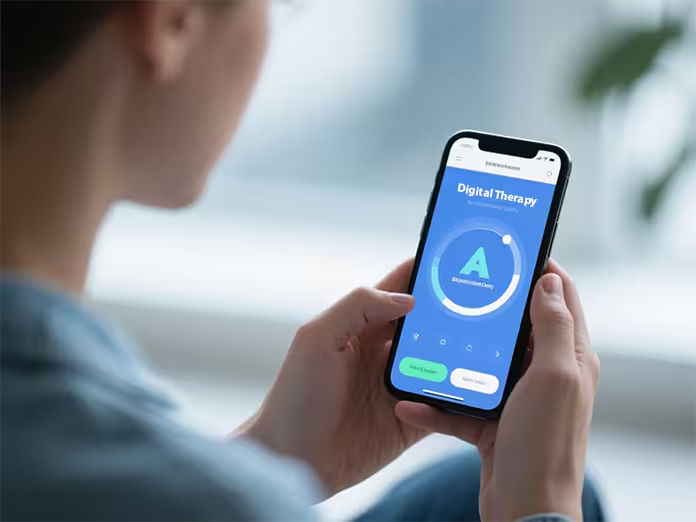
The mental health landscape is experiencing a digital revolution that’s reshaping how millions access support for anxiety and depression. With over 10,000 mental health apps available today, the question isn’t whether technology can help—it’s whether digital therapy for anxiety and depression can truly replace the human connection we’ve long considered essential for healing.
The Rise of Digital Mental Health Solutions
The statistics are staggering: one in five adults experiences mental health issues annually, yet traditional therapy remains inaccessible to many due to cost, location, or scheduling constraints. Enter digital therapy platforms like Headspace Health, BetterHelp, and Woebot, which promise 24/7 support at a fraction of traditional therapy costs.
These apps utilize evidence-based approaches including Cognitive Behavioral Therapy (CBT), mindfulness techniques, and mood tracking to deliver personalized mental health interventions. Users can access guided meditations, breathing exercises, thought-challenging tools, and even AI-powered chatbots that provide immediate responses during crisis moments.
How Digital Therapy Actually Works
Digital therapy for anxiety and depression operates through several key mechanisms:
- Cognitive Behavioral Therapy Modules: Apps break down complex CBT concepts into digestible, interactive lessons. Users learn to identify negative thought patterns, challenge cognitive distortions, and develop healthier coping mechanisms through gamified exercises and real-time feedback.
- Mood and Symptom Tracking: Advanced algorithms analyze user-inputted data about sleep patterns, mood fluctuations, and anxiety triggers to provide personalized insights and recommendations. This continuous monitoring creates a detailed mental health profile that traditional weekly sessions might miss.
- Crisis Intervention Features: Many platforms include emergency protocols, connecting users to crisis hotlines or providing immediate coping strategies when distress levels spike. Some apps can even detect concerning language patterns and proactively offer support.
- Social Support Networks: Digital communities within apps allow users to share experiences, celebrate victories, and receive peer support while maintaining anonymity—addressing the isolation that often accompanies mental health struggles.
The Scientific Evidence Behind App-Based Treatment
Research suggests that digital interventions can be surprisingly effective. A meta-analysis published in the Journal of Medical Internet Research found that smartphone apps for depression showed significant improvements in symptoms, with effect sizes comparable to face-to-face therapy in some cases.
Studies on apps like MindShift and Sanvello demonstrate measurable reductions in anxiety symptoms, with users reporting improved coping skills and increased self-awareness. The key lies in apps that combine evidence-based therapeutic techniques with engaging user experiences that encourage consistent use.
However, effectiveness varies dramatically between apps. Platforms that incorporate personalization, regular engagement prompts, and integration with healthcare providers show superior outcomes compared to generic meditation apps or simple mood trackers.
The Human Element: What Apps Cannot Replace
Despite impressive technological advances, digital therapy for anxiety and depression faces significant limitations that highlight the irreplaceable value of human counselors.
- Nuanced Understanding: Licensed therapists can read between the lines, picking up on subtle cues in body language, tone, and what clients don’t say. They adapt their approach in real-time based on complex emotional dynamics that algorithms struggle to interpret.
- Complex Trauma Processing: While apps excel at managing everyday anxiety and mild depression, they’re inadequate for processing complex trauma, severe mental health conditions, or crisis situations requiring immediate professional intervention.
- Therapeutic Relationship: The healing power of a genuine therapeutic alliance—built on trust, empathy, and human connection—remains unmatched by even the most sophisticated AI. This relationship often becomes a cornerstone of recovery that technology cannot replicate.
- Ethical Considerations: Human therapists navigate complex ethical situations, maintain appropriate boundaries, and make nuanced decisions about treatment approaches based on professional training and supervision that apps cannot provide.
The Future of Hybrid Mental Health Care
The most promising approach may not be choosing between apps and counselors, but integrating both into comprehensive care models. Digital therapy for anxiety and depression works best when it supplements, rather than replaces, professional mental health services.
- Blended Care Models: Progressive practices combine app-based daily support with periodic therapist sessions, creating continuous care that maximizes both accessibility and professional oversight. Patients use apps for homework assignments, skill practice, and between-session support while maintaining regular human contact.
- Therapist-Supervised Apps: Some platforms allow licensed professionals to monitor client progress through apps, adjusting treatment plans based on real-time data while maintaining the therapeutic relationship. This model preserves human judgment while leveraging technology’s strengths.
- Stepped Care Approaches: Healthcare systems are implementing models where individuals start with app-based interventions for mild symptoms, escalating to human therapists only when needed. This optimizes resource allocation while ensuring appropriate care levels.
Making the Right Choice for Your Mental Health
Determining whether digital therapy suits your needs requires honest self-assessment. Apps work well for individuals with mild to moderate symptoms who are motivated to engage consistently and have basic technological literacy. They’re particularly effective for maintaining gains made in traditional therapy or providing support during waiting periods for professional care.
However, anyone experiencing severe depression, suicidal thoughts, complex trauma, or symptoms significantly impacting daily functioning should prioritize professional human support. Apps can complement this care but shouldn’t serve as the primary intervention.
Conclusion: Technology as a Tool, Not a Replacement
Digital therapy for anxiety and depression represents a powerful tool in our mental health toolkit, but it’s not a universal solution. The future likely lies in thoughtful integration that harnesses technology’s accessibility and consistency while preserving the irreplaceable human elements of empathy, professional judgment, and therapeutic relationship.
As this digital revolution continues, the goal shouldn’t be replacement but enhancement—using technology to make quality mental health support more accessible while ensuring that human connection remains at the heart of healing. The question isn’t whether apps can replace counselors, but how we can best combine both to create a mental health care system that truly serves everyone’s needs.
































